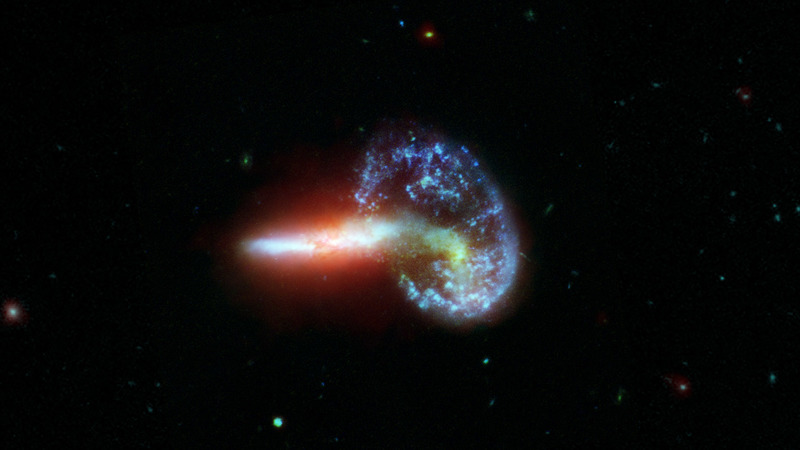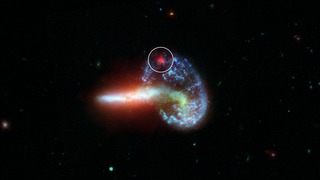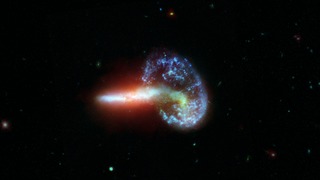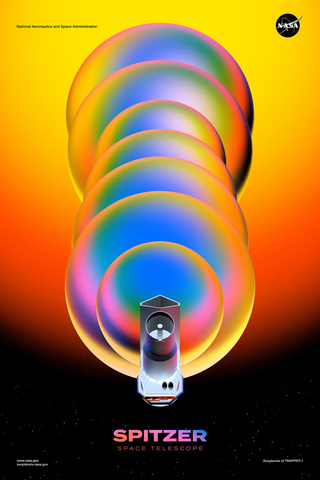
Credit: NASA/JPL-Caltech/STScI
Observation • August 4th, 2021 • ssc2021-06a
ssc2021-06a
This image shows galaxy Arp 148, captured by NASA's Spitzer and Hubble telescopes. Inside the white circle is specially-processed Spitzer data, which reveals infrared light from a supernova that is hidden by dust. Supernovae are massive stars that have exploded after running out of fuel. They radiate most brightly in visible light (the kind the human eye can detect), but these wavelengths are obscured by dust. Infrared light, however, can pass through dust.
The analysis of Arp 148 was part of an effort to find hidden supernovae in 40 dust-choked galaxies that also emit high levels of infrared light. These galaxies are known as luminous and ultra-luminous infrared galaxies (LIRGs and ULIRGs, respectively). The dust in LIRGs and ULIRGs absorbs optical light from objects like supernovae but allows infrared light from these same objects to pass through unobstructed for telescopes like Spitzer to detect.
NASA's Jet Propulsion Laboratory, Pasadena, Calif., manages the Spitzer Space Telescope mission for NASA's Science Mission Directorate, Washington. Science operations are conducted at the Spitzer Science Center at the California Institute of Technology, also in Pasadena. Caltech manages JPL for NASA.
The Hubble Space Telescope is a project of international cooperation between NASA and the European Space Agency. The Space Telescope Science Institute conducts Hubble science operations. The institute is operated for NASA by the Association of Universities for Research in Astronomy, Inc., Washington, D.C.
About the Object
- Name
- Arp 148 • Mayall's Object
- Type
- Galaxy > Type > Interacting
- Distance
- 450,000,000 Light Years
Color Mapping
| Band | Wavelength | Telescope |
| Optical | 336 nm | Hubble |
| Optical | 452 nm | Hubble |
| Optical | 606 nm | Hubble |
| Optical | 814 nm | Hubble |
| Infrared | 3.6 µm | Spitzer |
| Infrared | 8.0 µm | Spitzer |
Astrometrics
- Position ()
- RA =11h 3m 53.3s
- Dec = 40° 51' 0.9"
- Field of View
- 1.5 x 0.8 arcminutes
- Orientation
- North is up







